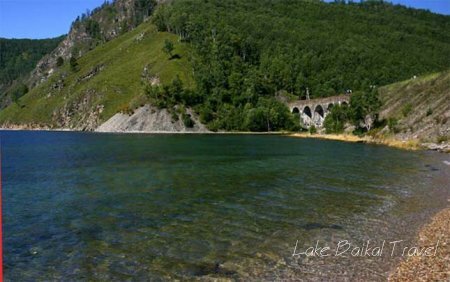Irkutsk: Karl Marx Street
The main central street of Irkutsk is called Karl Marks Street after German writer and philosopher Karl Marx. The history of the street goes back as far as to 1726 when famous Russian diplomat Savva Ragusinsky after his visit to the city ordered to enclose it by a ditch. Later the ditch was leveled and a wide straight appeared. It received the name of Bolshaya which means big as it runs for 2 km (1.3 miles) from the bank of Angara to the bank of the Ushakovka river.
In the XVIII-XIX-th centuries Irkutsk was mostly wooden, and almost all the buildings burnt to ashes in disastrous fire of 1879. In the end of the XIX-th century large stone mansions of rich merchants, fashionable shops, restaurants, museums, theatres, banks were built here on Karl Marks Street and almost all of them survived to this day.
Today, these are the only buildings constructed in neo-Renaissance style of architecture preserved in the city. In the past it was the main commercial area of Irkutsk and a popular residential area of businessmen and investors. This part of the city is still one of the main commercial centers where there is a plenty of good shops, banks, movie theaters, discos, restaurants and cafés.
Just a block away from Angara there is the Drama Theater standing at Karl Marks street. It is one of the streets’ remarkable buildings with neoclassical porch designed by architect Shreter. The first theatrical professional troop was founded in 1851 at the request of Irkutsk Governor Muravyov-Amursky. Originally the building of the theater was wooden. In 1861 it was on fire and up to 1873 the actors had to rent different merchant buildings throughout the theatrical season. Today, the theater bears the name of Ohklopkov, an outstanding actor and stage manager. The repertoire includes both classical and modern plays.
At the end of Karl Marks street there is the Regional museum of Local Lore (the museum of regional studies) built in Moresque architectural style. The museum was founded in December 1782 by Irkutsk Governor Klichka. This main building of the museum is a monument of architecture built by architect Rosen in 1883.
Right across the street from the museum there is the former Governor’s house locally called as the White House (though recently painted in yellow). It is a neoclassical mansion of the early XIX-th century which now houses part of the Irkutsk University library. It is the monument of classical colonnades. The white limestone building was constructed in 1804 under the direction of an Italian architect Kvarengy. For more than a century it was the house of the Governors and the seat of power of all Siberia.




In the XVIII-XIX-th centuries Irkutsk was mostly wooden, and almost all the buildings burnt to ashes in disastrous fire of 1879. In the end of the XIX-th century large stone mansions of rich merchants, fashionable shops, restaurants, museums, theatres, banks were built here on Karl Marks Street and almost all of them survived to this day.
Today, these are the only buildings constructed in neo-Renaissance style of architecture preserved in the city. In the past it was the main commercial area of Irkutsk and a popular residential area of businessmen and investors. This part of the city is still one of the main commercial centers where there is a plenty of good shops, banks, movie theaters, discos, restaurants and cafés.
Just a block away from Angara there is the Drama Theater standing at Karl Marks street. It is one of the streets’ remarkable buildings with neoclassical porch designed by architect Shreter. The first theatrical professional troop was founded in 1851 at the request of Irkutsk Governor Muravyov-Amursky. Originally the building of the theater was wooden. In 1861 it was on fire and up to 1873 the actors had to rent different merchant buildings throughout the theatrical season. Today, the theater bears the name of Ohklopkov, an outstanding actor and stage manager. The repertoire includes both classical and modern plays.
At the end of Karl Marks street there is the Regional museum of Local Lore (the museum of regional studies) built in Moresque architectural style. The museum was founded in December 1782 by Irkutsk Governor Klichka. This main building of the museum is a monument of architecture built by architect Rosen in 1883.
Right across the street from the museum there is the former Governor’s house locally called as the White House (though recently painted in yellow). It is a neoclassical mansion of the early XIX-th century which now houses part of the Irkutsk University library. It is the monument of classical colonnades. The white limestone building was constructed in 1804 under the direction of an Italian architect Kvarengy. For more than a century it was the house of the Governors and the seat of power of all Siberia.






